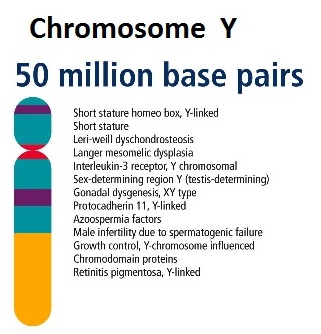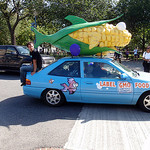Genetics Activities for Learning
Lesson Plans for the Genetics Topic
These learning activities cover everything in the IB guide for this topic. Lesson plans include resources to use on an interactive white board and worksheets to print. There is a mix of laboratory work, theory lessons, and assessment materials with model answers.
Genes - Planning sheet 3.1This simple sheet sets out the learning objectives, essential questions and some ideas for assessment for the following activities | ||
 | Chromosomes genes & alleles.Time: 1hr Students get a insight into the rapid changes in our understanding of genetics and the human genome by watching the play list of short YouTube clips. Using the Quizlet flashcards students also learn the basic definitions of gene, allele, genome, gene mutation and the worksheet helps them to make clear structured notes which link to the IB guide. | |
 | Human Genome Project.Time: 1h A problem based learning webquest. Students explore three excellent websites with information about the Human Genome project. The aim is to decide if we will benefit from the findings during the 21st century. There is a structured note taking sheet for students and the lessons ends with an open ended plenary task which allows some differentiation through student choice. | |
 | Base substitution mutation.Time: 1hr Students build on the basic vocabulary and apply their understanding to an IB style "Explain" question about the consequences of a base substitution leading to sickle cell anaemia. This is an introduction the alleles, and a structured worksheet helps to keep their notes clear. Three similar IB styles questions can be attempted and students can see typical student responses and model answers which can be used to help improve exam technique. | |
Chromosomes - Planning sheet 3.2This simple sheet sets out the learning objectives, essential questions and some ideas for assessment for the following activities | ||
 | ChromosomesComparisons of prokaryote and eukaryote chromosomes and an introduction to the concept of diploid and haploid nuclei. The use of databases to compare locus of specific genes and to compare chromosome numbers of different species | |
Karyograms and non-disjunctionTime: 1h This is a lesson with three short activities to learn how non-disjunction can lead to changes in chromosome number. This is illustrated by reference to Down syndrome (trisomy 21). Students will watch a six minute video clip, complete a Power Point karyotype activity and then analyse some karyograms using a worksheet. To finish there is a review sheet containing some IB style questions. | ||
Meiosis - Planning sheet 3.3This simple sheet sets out the learning objectives, essential questions and some ideas for assessment for the following activities | ||
 | Introduction to MeiosisTime: 1hr Students begin by sorting cards to outline the process of meiosis, including pairing of homologous chromosomes and crossing over, followed by two divisions, resulting in four haploid cells. Online flashcards, a PowerPoint activity and a test help to consolidate learning of the stages of meiosis. This lesson concludes with a short practical activity using modelling clay to illustrate how crossing over increases the variation in offspring produced be sexual reproduction. | |
Inheritance - planning sheet 3.4This simple sheet sets out the learning objectives, essential questions and some ideas for assessment for the following activities | ||
 | Theoretical Genetics 1.Time: 1h In this lesson students will be shown the link between chromosomes and genetics. A powerpoint intro to allele and genotypes in a simple case of inheritance of flower colour illustrates the link and demonstrates new terminology. Working with flashcards and a card sort activity students build their confidence in these terms before using them in some genetics problems involving Punnet squares and phenotype ratios. | |
 | Stargardt disease- linking Cells & Genetics topicsTime; 1h This activity provides a great opportunity for students to make links between different topics of their IB studies - after all this is what happens in the exam questions. Stargardt disease is an inherited disorder of the retina – the layer of the eye that senses light. It is an inherited condition caused by a mutation in a single gene. This mutation results prevents the synthesis of a protein which is important in the vitamin A cycle. This is a metabolic process which takes place across two layers of specialized cells in the retina of the eye. A build up of a fatty deposit leads to the death of cells and blindness. | |
 | Theoretical Genetics 2Time: 1h Beginning with a review of the punnet square questions from last lesson, students are then introduced to some more complex genetics using the example of human blood groups. Teacher led Description of ABO blood groups or studying the textbook on the alleles; IA IB i leads to two | |
| Sex chromosomes and Sex Linked GenesTime: 1h In this lesson plan students read about the inheritance of colour blindness and haemophilia as examples of sex linkage. Then they make structured notes on the essential points using the structured notes worksheet. Following this twelve exercises test the students' understanding of sex linked genes. The final section gives the faster students some thought provoking reading on the myths of genetics examples in biology education. As we learn more about genetics there are fewer and fewer examples of single genes controlling simple inheritance. | |
 | Hairy Hands - genetics of mid-digital hairTime: 1h This is a problem based learning activity. Students are presented with a concerned teenager and need to find out about the genetics of hairy hands in order to give them an answer. Structured worksheets and an online gadget help to make sense of the genetics. | |
Pedigree Chart & Phenotype RatiosTime: 1h This an investigation of a rather strange but real genetic condition which affects just a handful of people across the world. A short video introduction leads to some theory work to predict the genotypic and phenotypic ratios of the offspring of this monohybrid cross. Deduce the genotypes and phenotypes of individuals in pedigree charts using The ‘Warewolf Gene’ and the Worlds Hairiest Teenager PEDIGREE ACTIVITY | ||
 | IA Maize Genetics ExperimentTime: 1h This is a good practical example of using phenotype ratios to predict and better understand the genotypes of parents and offspring. Students are first introduced to a simple method of testing goodness of fit using a chi squared test. This is followed by a short experiment using maize cobs with different coloured kernels. Phenotype ratios can be quickly calculated leaving plenty of time for analysis of the data using Chi squared. The third activity is slightly more complex online drosophila breeding lab in which students design and test their own breeding experiments. | |
Genetic modification - planning sheet 3.5This simple sheet sets out the learning objectives, essential questions and some ideas for assessment for the following activities | ||
 | DNA ProfilingTime: 1h Simple experiments illustrate the principles of PCR and gel electrophoresis in DNA profiling. Students complete structured notes and then test their basic understanding with an online DNA profiling activity They learn how to describe these two applications of DNA profiling to determine paternity and also in forensic investigations. Through answering a few IB style questions the students analyse DNA profiles and draw conclusions from them. | |
 | Genetically Modified Organisms...Time: 1h Students follow an online simulation of the basic technique used to make genetically modified organisms using two examples of GMOs. There is a guided worksheet to record the potential benefits and possible harmful effects of their example of genetic modification. Students test their understanding with some IB style questions to end the lesson. | |
| Introduction to Cloning - Therapeutic Cloning DebateTime: 2h This activity introduces reproductive and therapeutic cloning. It begins with examples of reproductive cloning and and a consideration of their implications and some views for and against cloning. Students carry out a short online activity and make notes about the method of somatic-cell nuclear transfer to produce cloned cells. A third longer activity uses another video to guide students through the differences between reproductive cloning and therapeutic cloning. An optional debate activity, using prompt cards to help students understand some of the most relevant issues, completes the set. |




